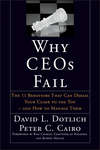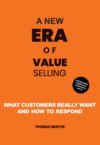Maht 220 lehekülge
Raamatust
With this book, Thomas Menthe provides new insights into the era of value-selling, which has been the Number 1 method in selling complex products and services. Today, customers are expecting more while paying less and the value of your offer is defined by the customer not by the seller.
Data is the new oil – the new digital age allows different ways with technology like machine learning to better analyze customer journeys, get insights, predict behaviors and personalize communication to improve customer retention. Digitalization will change the buying behavior much more towards e-commerce and self-service consultation with the support of sales robots. Value can be created from data, which needs to be structured, analyzed and used for the individual customer engagement. Does this mean the end of the sales representative and solution sales?
Value is not based solely on product dimensions, much more emotional value created counts during the decision making process. The new era of value-selling explains, how value can be made tangible by the value quotient and ways to generate rational and emotional ROI for customers through story-telling and relationship benefits. Value is always first on the buyer's mind and the new value-selling concept will dramatically improve your business and show how to respond to the customer of tomorrow.
Thomas Menthe (MBA) is a sales expert, experienced seller, recognized speaker and author of many publications about customer value, new ways of selling, selling strategy, leadership and coaching. His best selling book Kundennutzen has sold thousands of copies and others are available in their 4th edition. He served global companies like Bearing Point, Canon, Carlsberg, Cisco Systems, Global Knowledge, KWS, Microsoft, RIM, Xerox and others.











